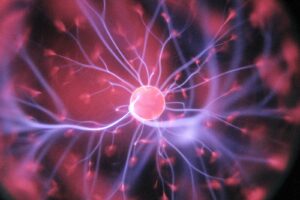Electrolysis: How Electrolysis Works for Hair Removal

electrolysis hair removal
Electrolysis is a fascinating process with diverse applications, including hair removal and hydrogen production. As an essential topic in electrology, understanding how electrolysis works can shed light on its effectiveness in achieving permanent hair removal and its role in sustainable energy solutions. Through the breakdown of compounds using electrical energy, electrolysis opens doors to innovative applications in various fields.
Understanding Electrolysis
Definition of Electrolysis
Electrolysis is a chemical process that employs an electric current to drive a non-spontaneous chemical reaction. Fundamentally, electrolysis involves the decomposition of compounds by passing electricity through an electrolyte. This process is pivotal in transforming water into hydrogen and oxygen, a method crucial for hydrogen production. It is also employed for disrupting hair growth by targeting the hair follicle, offering a method of hair removal.
How Electrolysis Works
The electrolysis process is initiated by applying an electric current through an electrolyte solution, causing ions to move toward electrodes. In water electrolysis, this results in the oxidation of water, leading to the production of hydrogen gas and oxygen. Similarly, in hair removal, electrolysis work involves inserting a fine probe into the hair follicle and applying electrical energy to destroy the hair at its root, offering a solution for unwanted hair growth.
Applications of Electrolysis
Electrolysis finds applications across various domains, from permanent hair removal to hydrogen production. In the realm of electrology, it is hailed as a technique to effectively destroy the hair follicle, preventing future hair growth. Beyond personal care, the application of electrolysis extends to the industrial sector, where it plays a role in producing hydrogen and chlorine through the electrolysis of brine, contributing to renewable energy initiatives.
Electrolysis in Hair Removal

Photo by Farhad Ibrahimzade on Unsplash
Process of Hair Removal with Electrolysis
The process of hair removal using electrolysis involves a meticulous approach where an electrologist inserts a fine probe into the hair follicle. This probe delivers a direct electric current to the follicle, effectively destroying the hair at its root. This method of hair removal is precise and is known for its ability to provide permanent hair removal. By utilizing the electrolysis process, each hair follicle is individually targeted, which prevents future hair growth by disrupting the follicle’s ability to regenerate hair.
Comparison with Laser Hair Removal
When comparing electrolysis with laser hair removal, it’s important to understand the distinct mechanisms and outcomes of each method:
- Electrolysis involves the use of an electric current to destroy the hair follicle, offering a permanent solution to hair removal.
- In contrast, laser hair removal uses focused light to target pigments in the hair, which can reduce hair growth but may not guarantee permanent results.
Electrolysis may be more suitable for individuals seeking a long-term solution for unwanted hair growth.
Benefits of Electrolysis for Unwanted Hair Growth
Electrolysis offers numerous benefits as a method for addressing unwanted hair growth. Here are some of the key advantages:
- Its ability to permanently eliminate hair, unlike other temporary hair removal methods.
- It can be performed on various skin and hair types, making it a versatile option.
The precision of electrolysis work ensures that each hair follicle is accurately targeted, reducing the risk of hair returning. This method also provides a solution free from the need for chemical treatments, aligning with preferences for more natural approaches to hair removal.
The Science Behind Electrolysis

Photo by Hal Gatewood on Unsplash
The Role of Hydrogen in Electrolysis
Hydrogen plays a pivotal role in the electrolysis process, especially when it comes to energy production and storage. By using electrolysis, water is split into hydrogen and oxygen, providing a clean source of energy. In particular, hydrogen gas is a crucial component in renewable energy initiatives as it offers a sustainable alternative to fossil fuels. The electrolysis of water, whether through alkaline or solid oxide electrolysis, facilitates the production of hydrogen, which can be stored and used in various applications.
Water Electrolysis Explained
Water electrolysis is a fundamental process that involves the decomposition of water into hydrogen and oxygen using an electric current. This process takes place in an electrolytic cell where water acts as the electrolyte. As electrical energy is applied, water molecules undergo oxidation at the anode, producing oxygen gas, while at the cathode, reduction occurs, generating hydrogen gas. This method is not only essential for hydrogen production but also contributes to reducing carbon footprints by enabling cleaner energy solutions.
Electrolysis Treatments: What to Expect
When undergoing electrolysis treatments for hair removal, clients can expect a precise and individualized approach. An electrologist will carefully insert a fine probe into each hair follicle, applying a controlled electric current to destroy the hair at its root. This method ensures permanent hair removal and is effective on different skin and hair types. Clients may require multiple sessions to achieve optimal results, as each hair follicle needs to be targeted during its specific growth phase to prevent future hair growth.
Electrologist’s Role in Electrolysis

Qualifications of a Professional Electrologist
To perform electrolysis effectively, electrologists must possess specific qualifications and training. They are skilled in understanding the nuances of the electrolysis process, ensuring the safe and efficient application of electrical energy to destroy hair follicles. Training often includes knowledge of skin and hair anatomy, various electrolysis techniques, and the ability to work with different equipment. Their expertise enables them to provide clients with professional and reliable treatments that yield permanent hair removal results.
Consultation and Treatment Planning
The consultation phase is a crucial step in electrolysis treatments, where the electrologist assesses the client’s skin and hair type, and discusses treatment goals. During this phase, a personalized treatment plan is developed, taking into consideration various factors. The electrologist will:
- Explain the process and set realistic expectations
- Outline the number of sessions required for effective results
This tailored approach ensures that each client receives the most suitable treatment for their needs.
Aftercare and Maintenance
Aftercare is an essential component of the electrolysis journey, ensuring that the skin heals properly and remains healthy. Electrologists provide guidance on post-treatment care, which may include avoiding sun exposure, refraining from using harsh skincare products, and following specific skincare routines. Maintenance sessions might be recommended to address any new hair growth, as electrolysis targets individual follicles during their active growth phase. Proper aftercare and maintenance help in achieving optimal and lasting results from the treatment.

